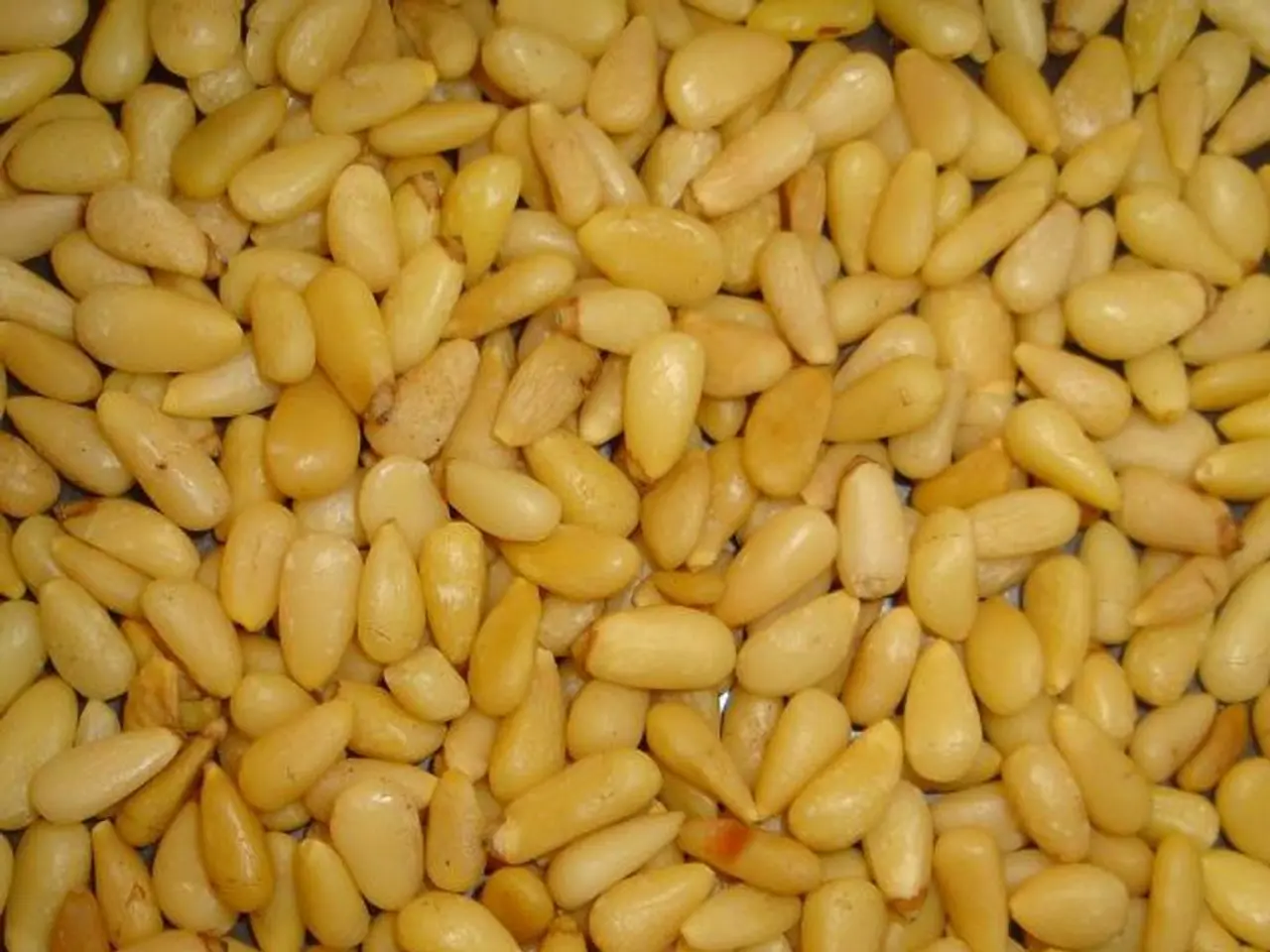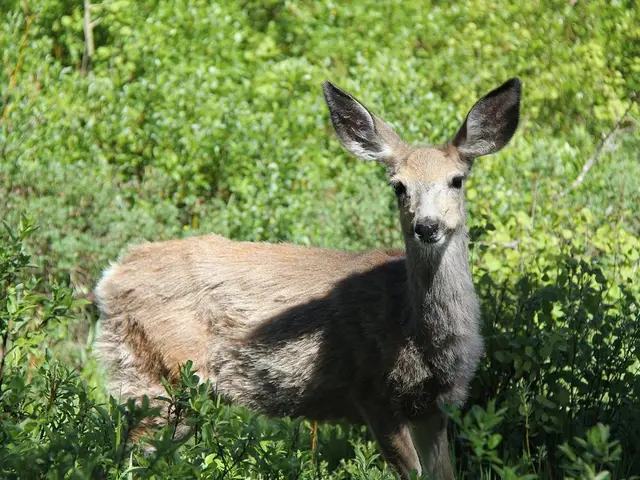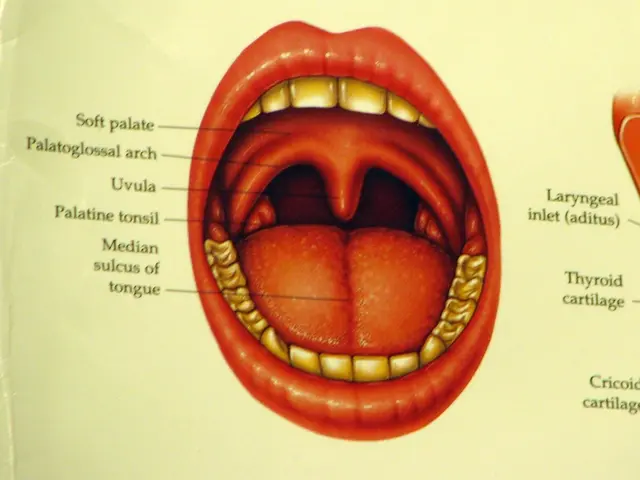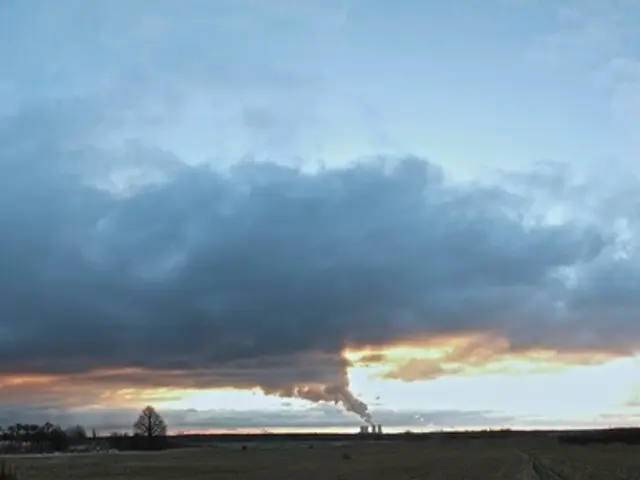Catastrophic global famine threatened by significant decrease in 87% of global corn yield due to nuclear winter, according to research findings
A new study published in the journal Environmental Research Letters has modeled the catastrophic impact of a nuclear winter on global corn production, shedding light on the potential consequences of a large-scale nuclear war.
The research reveals that a major global nuclear war could result in an 80% decrease in annual corn yields, injecting 165 million tons of soot into the atmosphere. In comparison, a regional nuclear war might eject about 5.5 million tons of soot.
The findings suggest that a nuclear winter would dramatically reduce global corn production by sharply lowering temperatures and sunlight due to soot and smoke blocking the atmosphere. This decline could range from a 7% reduction in the event of a regional nuclear war to an 80% drop following a large-scale global nuclear conflict.
The peak of harmful UV-B radiation would occur six to eight years after a global nuclear war, further exacerbating the problem. In the worst-case scenario, an 87% overall drop in corn production is predicted due to the combined effects of soot and UV-B radiation.
Key impacts on corn production include abrupt global cooling and reduced sunlight severely limiting photosynthesis, shortened growing seasons restricting corn maturation, and increased UV-B radiation from ozone depletion damaging plant tissues.
To mitigate these effects, researchers suggest preparing "agricultural resilience kits" containing fast-growing, cold-tolerant corn seed varieties that can adapt better to the harsher climate. Additionally, developing and deploying short-season, cold-adapted maize strains could improve yields by about 10% compared to no adaptation in nuclear winter conditions.
Even with adaptation, complete recovery could take 7 to 12 years, emphasizing the urgency of preparedness. Without such strategies, the risk of widespread crop failures, food shortages, and resulting famine is extremely high.
The agricultural resilience kits concept can be expanded to other disasters, and the simulations were made possible by the Cycles agroecosystem model, which uses high-performance computing to conduct detailed, multi-year simulations of crop growth. The Penn State team simulated corn production in 38,572 locations under six nuclear war scenarios of increasing severity.
The simulations considered the impact of UV-B radiation on plant tissue, estimating an additional 7% reduction in corn production. The Penn State team proposes "agricultural resilience kits" containing region- and climate-specific seeds for crops that can thrive in cooler conditions with shorter growing seasons. These kits would help sustain food production during the unstable years following a nuclear war, while supply chains and infrastructure recover.
The investigation advances our understanding of global agricultural resilience and adaptation in response to catastrophic climatic disruptions. It underscores the importance of proactive measures focusing on seed adaptation and agricultural resilience to partially mitigate the impact of a nuclear winter on global corn production.
- The study in Environmental Research Letters, focusing on nuclear winter's impact on corn production, also highlights the potential negative effects of UV-B radiation on various plant tissues, suggesting a need for innovative approaches in the field of agricultural resilience and health-and-wellness.
- Beyond the catastrophic consequences of a nuclear winter on corn production, this research also emphasizes the role of science and innovation in addressing environmental challenges, such as climate change, by developing short-season, cold-adapted maize strains that could help improve crop yields during and after such disasters.
- Aside from the immediate threat to global corn production, a large-scale nuclear war could significantly impact the environmental sciences, particularly climate change and environmental health, due to the release of soot and other pollutants into the atmosphere, necessitating ongoing research and development in robotics and related technologies to monitor and mitigate these effects.




